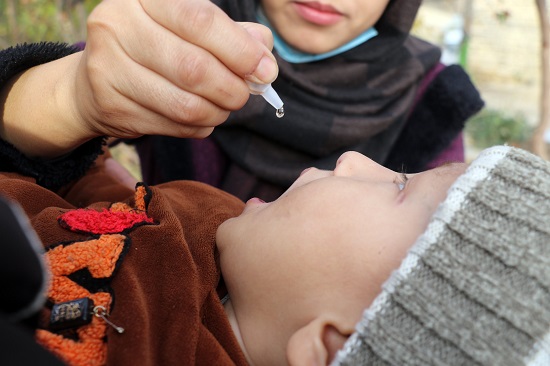
16 January 2017 – I meet Zainab in front of a busy park full of playing children. She and a team of female polio vaccinators kneel in the middle of a noisy group of children and start vaccinating the children one by one with confident, quick moves.
One of the team members hands out orange and green balloons after marking the children’s fingers in blue marker pen to show they have received the vaccination.
The children show off their balloons and blue fingers enthusiastically.
Zainab has recently been promoted and now supervises five female vaccination teams. She enjoys her work.
“I like to be a supervisor and have my own teams. I used to be a vaccinator in a health centre, and have been working in the polio eradication programme since I graduated.”
We move to a close by area meet her next team. This team has vaccinated 49 children today, and it is only 9.30 the morning. It is now the second day of the last vaccination campaign in 2017. On the first day of the campaign, the team vaccinated 138 children in total.
Convincing people to vaccinate their children is not always easy. “People believe that vaccinations reduce fertility and causes disrespectful behavior in children. We tell them this is not true”, Zainab explains.
This time all children are vaccinated without problems and a Zainab’s team member Asma marks the wall with chalk.
More female workers, more children reached with vaccines
There are almost 70 000 front line polio workers in Afghanistan, of whom less than 10% are female. This is possibly the largest female workforce in Afghanistan.
Some regions have more female workers than others. In urban areas, around third of the workers are female, whereas in rural areas the proportion is much lower. The role of females is crucial however.
Mansour, who works as a district polio officer in the country’s south, says: “Before we had female polio workers, we were missing children who were newborn and sleeping. When the men were working in town, there was often no-one who could take the children out of the house to be vaccinated when the teams knocked on the gates. Females can enter the houses, but males cannot.”
The vaccination coverage in the region is now getting better, as female vaccinators have more access to the children.
Women like Zainab are in the frontline of polio eradication, ensuring vaccines reach every child every time.



